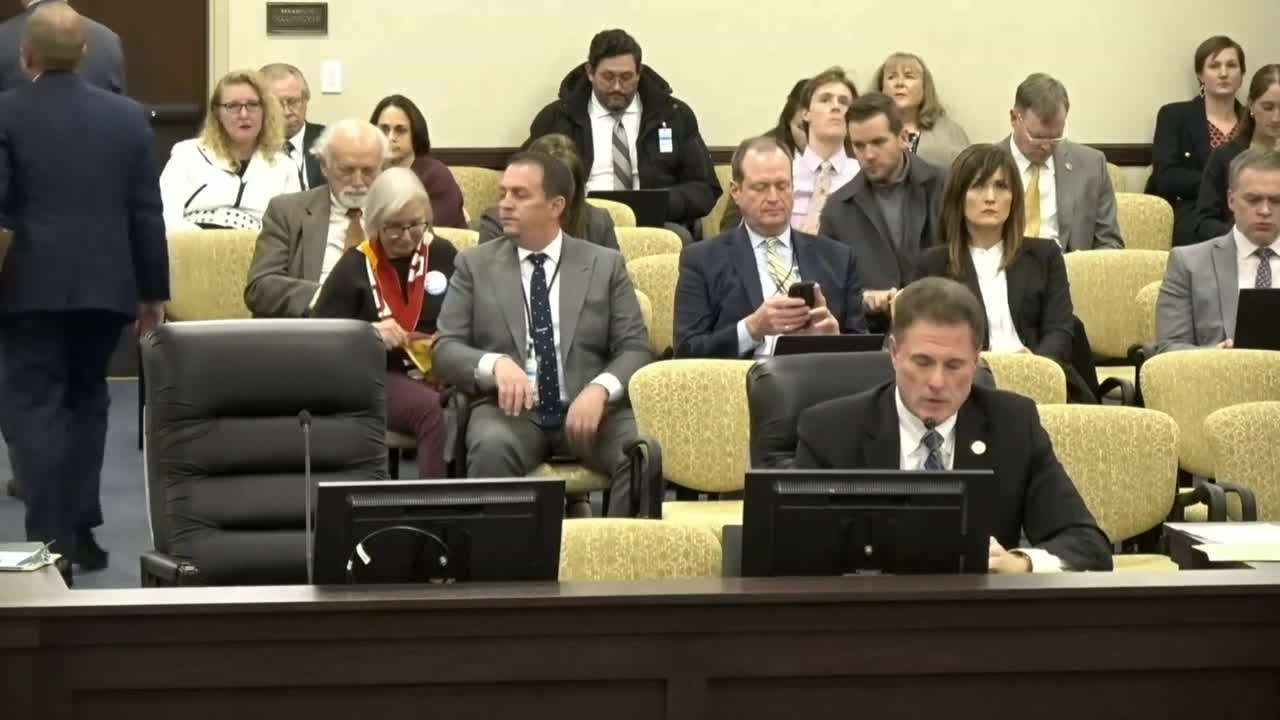Utah tackles housing crisis with innovative financing plan
January 25, 2024 | House Political Subdivisions Committee, Utah House, Utah Legislative Branch, Utah

This article was created by AI summarizing key points discussed. AI makes mistakes, so for full details and context, please refer to the video of the full meeting. Please report any errors so we can fix them. Report an error »

Utah's housing crisis is exacerbated by a significant number of entitled building lots—approved but undeveloped parcels of land—due to financing challenges for necessary infrastructure. During a recent government meeting, officials highlighted that tens of thousands of these lots exist statewide, with one Salt Lake County city alone holding 9,000. Developers face high borrowing costs, with interest rates ranging from 10% to 15%, making it difficult to finance essential infrastructure like roads and utilities.
To address this issue, a new legislative proposal aims to create a financing mechanism that allows developers to access private capital at lower interest rates, between 5% and 7%. This initiative does not alter land use authority or subdivision approval processes, which remain under local government control. Instead, it provides a financial tool to facilitate the construction of infrastructure, thereby enabling the development of homes on these lots.
The proposed infrastructure financing districts would require 100% landowner consent to form and would be limited to projects with a minimum of $1 million in anticipated infrastructure improvements. Developers would be able to issue municipal bonds to finance these projects, with repayment tied to the sale of homes within the district. As homes are sold, the associated bond obligations would be retired, ensuring that new homeowners are not burdened by additional assessments.
The legislation also includes a provision for a minimal taxing authority, akin to that of mosquito abatement districts, which is primarily a requirement for bond issuance rather than a mechanism for funding infrastructure maintenance. This tax would not be used to retire bonds, and the districts would dissolve once all homes are occupied and the bonds are paid off.
Officials emphasized that this approach is designed to increase housing inventory in Utah, potentially adding thousands of homes to the market and alleviating some pressure on housing prices. The meeting concluded with a call for collaboration among stakeholders to ensure the successful implementation of this financing tool, which aims to stimulate development and address the ongoing housing shortage in the state.
To address this issue, a new legislative proposal aims to create a financing mechanism that allows developers to access private capital at lower interest rates, between 5% and 7%. This initiative does not alter land use authority or subdivision approval processes, which remain under local government control. Instead, it provides a financial tool to facilitate the construction of infrastructure, thereby enabling the development of homes on these lots.
The proposed infrastructure financing districts would require 100% landowner consent to form and would be limited to projects with a minimum of $1 million in anticipated infrastructure improvements. Developers would be able to issue municipal bonds to finance these projects, with repayment tied to the sale of homes within the district. As homes are sold, the associated bond obligations would be retired, ensuring that new homeowners are not burdened by additional assessments.
The legislation also includes a provision for a minimal taxing authority, akin to that of mosquito abatement districts, which is primarily a requirement for bond issuance rather than a mechanism for funding infrastructure maintenance. This tax would not be used to retire bonds, and the districts would dissolve once all homes are occupied and the bonds are paid off.
Officials emphasized that this approach is designed to increase housing inventory in Utah, potentially adding thousands of homes to the market and alleviating some pressure on housing prices. The meeting concluded with a call for collaboration among stakeholders to ensure the successful implementation of this financing tool, which aims to stimulate development and address the ongoing housing shortage in the state.
View full meeting
This article is based on a recent meeting—watch the full video and explore the complete transcript for deeper insights into the discussion.
View full meeting

